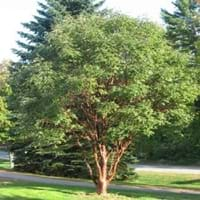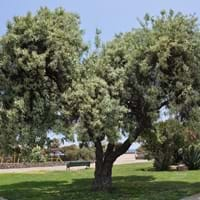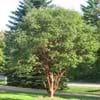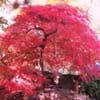Life Span
Perennial
Perennial
Origin
China
Southern Europe, Russia/Siberia, Mediterranean, Central Asia, Southeastern Asia, China
Types
Not Available
not available
Habitat
Mixed deciduous forest
fencerows, Forest edges, mine spoils, Old fields, open Woodlands, Pastures, Roadsides, sand dunes
USDA Hardiness Zone
4-8
2-8
Sunset Zone
2a, 2b, 3a, 3b, 4, 5, 6, 7, 8, 9, 14, 15, 16, 17, 18, 19, 20, 21
A2, A3, 1a, 1b, 2a, 2b, 3a, 3b, 7, 8, 9, 10, 11, 12, 13, 14, 18, 19
Habit
Upright/Erect
Oval or Rounded
Flower Color
Yellow
White, Yellow green, Silver
Flower Color Modifier
Bicolor
Bicolor
Fruit Color
Green
Yellow, Silver
Leaf Color in Spring
Dark Green
Light Green, Gray Green, Silver
Leaf Color in Summer
Dark Green
Light Green, Gray Green, Silver
Leaf Color in Fall
Red, Green, Bronze, Orange Red
Light Green, Gray Green, Silver
Leaf Color in Winter
Not Available
Not Available
Leaf Shape
Compound
Ovate
Plant Season
Spring, Summer, Fall, Winter
Spring, Summer, Fall, Winter
Sunlight
Full Sun
Full Sun, Partial Sun, Partial shade
Type of Soil
Clay, Loam
Clay, Loam, Sand
The pH of Soil
Acidic, Neutral, Alkaline
Acidic, Neutral, Alkaline
Soil Drainage
Well drained
Well drained
Bloom Time
Spring
Late Spring, Early Summer
Tolerances
Not Available
Pollution, Salt, Soil Compaction
Where to Plant?
Ground
Ground
How to Plant?
Grafting, Seedlings
Seedlings, Vegetative Reproduction
Plant Maintenance
Medium
Medium
Watering Requirements
Medium
Do not let dry out between waterings, Do Not over Water
In Summer
Lots of watering
Lots of watering
In Spring
Moderate
Moderate
In Winter
Average Water
Average Water
Soil pH
Acidic, Neutral, Alkaline
Acidic, Neutral, Alkaline
Soil Type
Clay, Loam
Clay, Loam, Sand
Soil Drainage Capacity
Well drained
Well drained
Sun Exposure
Full Sun
Full Sun, Partial Sun, Partial shade
Pruning
Remove damaged leaves, Remove dead branches, Remove dead leaves
pruning needed for strong structure
Fertilizers
All-Purpose Liquid Fertilizer
All-Purpose Liquid Fertilizer
Pests and Diseases
Red blotch
Canker, fungus, Insects, Leaf spot, Red blotch, Verticillium Wilt
Plant Tolerance
Drought
Pollution, Salt, Soil Compaction
Flowers
Insignificant
Showy
Flower Petal Number
Single
Single
Foliage Texture
Medium
Fine
Foliage Sheen
Matte
Matte
Attracts
Not Available
Birds
Allergy
Not Available
Asthma
Aesthetic Uses
Showy Purposes
Showy Purposes
Beauty Benefits
Not Available
Not Available
Environmental Uses
Air purification
Wildlife
Medicinal Uses
Not Available
Not Available
Part of Plant Used
Wood
Whole plant
Other Uses
Showy Purposes
Used as Ornamental plant
Used As Indoor Plant
No
No
Used As Outdoor Plant
Yes
Yes
Garden Design
Feature Plant, Foundation, Mixed Border
Feature Plant, Hedges, Mixed Border, Screening / Wind Break, Topiary / Bonsai / Espalier
Botanical Name
ACER griseum
ELAEAGNUS angustifolia
Common Name
Paperbark Maple
Russian Olive
In Hindi
paperbark maple
रूस ओलिव
In German
paperbark Ahorn
russische Olive
In French
érable paperbark
Olive russe
In Spanish
arce paperbark
oliva ruso
In Greek
Paperbark σφενδάμου
Ρωσική Ελιάς
In Portuguese
de bordo paperbark
Olive russo
In Polish
klon paperbark
rosyjski Olive
In Latin
paperbark acernis
Russian Olive
Phylum
Magnoliophyta
Magnoliophyta
Class
Magnoliopsida
Magnoliopsida
Order
Sapindales
Rhamnales
Family
Aceraceae
Elaeagnaceae
Clade
Angiosperms, Eudicots, Rosids
Angiosperms, Eudicots, Rosids
Tribe
Not Available
Not Available
Subfamily
Not Available
Not Available
Number of Species
Not Available
Importance of Paperbark Maple and Russian Olive
Want to have the most appropriate plant for your garden? You might want to know the importance of Paperbark Maple and Russian Olive. Basically, these two plants vary in many aspects. Compare Paperbark Maple and Russian Olive as they differ in many characteristics such as their life, care, benefits, facts, etc. Every gardener must at least have the slightest clue about the plants he wants to plant in his garden. Compare their benefits, which differ in many ways like facts and uses. The medicinal use of Paperbark Maple is Not Available whereas of Russian Olive is Not Available. Paperbark Maple has beauty benefits as follows: Not Available while Russian Olive has beauty benefits as follows: Not Available.
Compare Facts of Paperbark Maple vs Russian Olive
How to choose the best garden plant for your garden depending upon its facts? Here garden plant comparison will help you to solve this query. Compare the facts of Paperbark Maple vs Russian Olive and know which one to choose. As garden plants have benefits and other uses, allergy is also a major drawback of plants for some people. Allergic reactions of Paperbark Maple are Not Available whereas of Russian Olive have Asthma respectively. Having a fruit bearing plant in your garden can be a plus point of your garden. Paperbark Maple has no showy fruits and Russian Olive has showy fruits. Also Paperbark Maple is not flowering and Russian Olive is not flowering . You can compare Paperbark Maple and Russian Olive facts and facts of other plants too.





